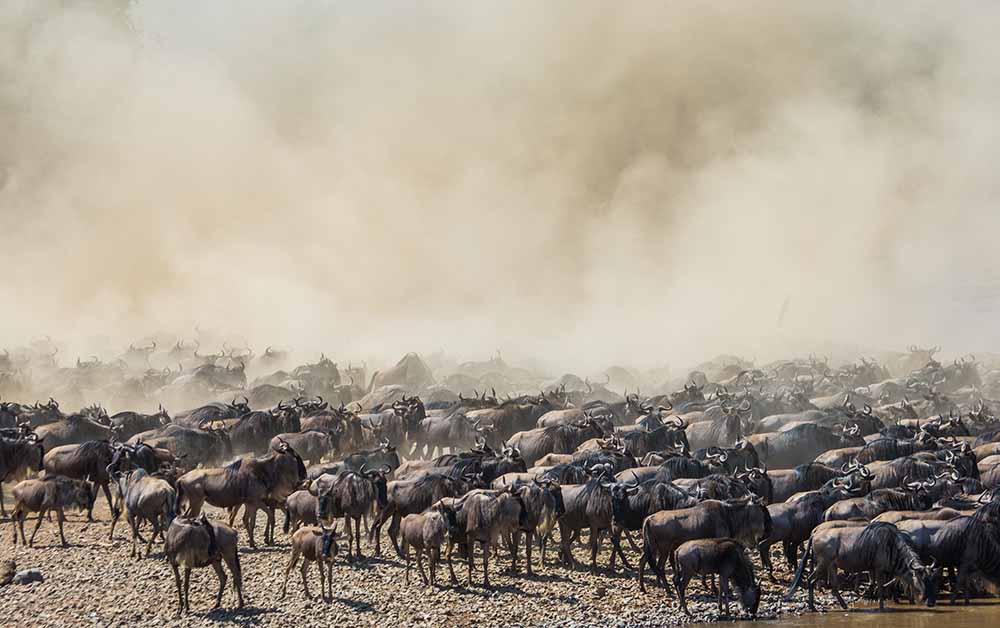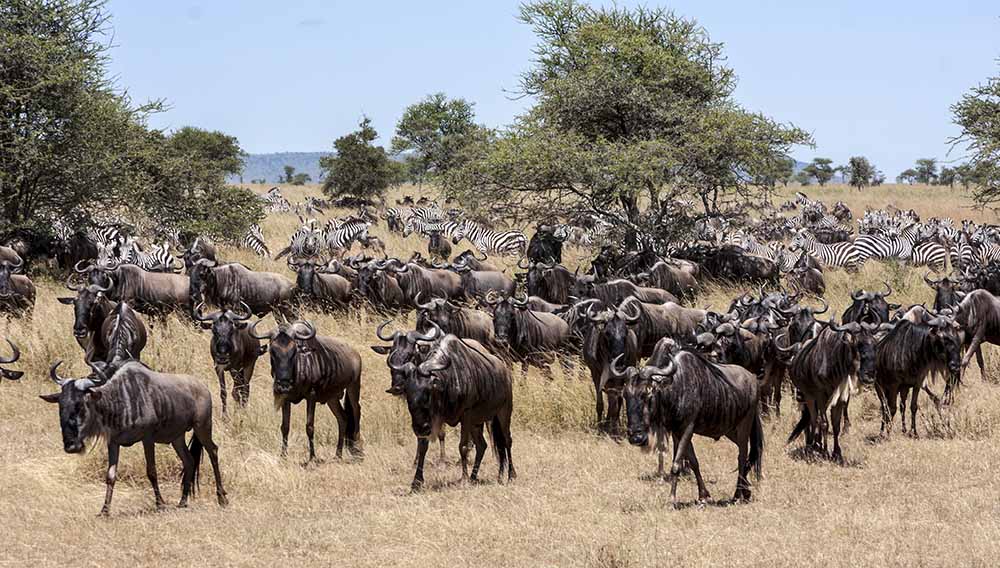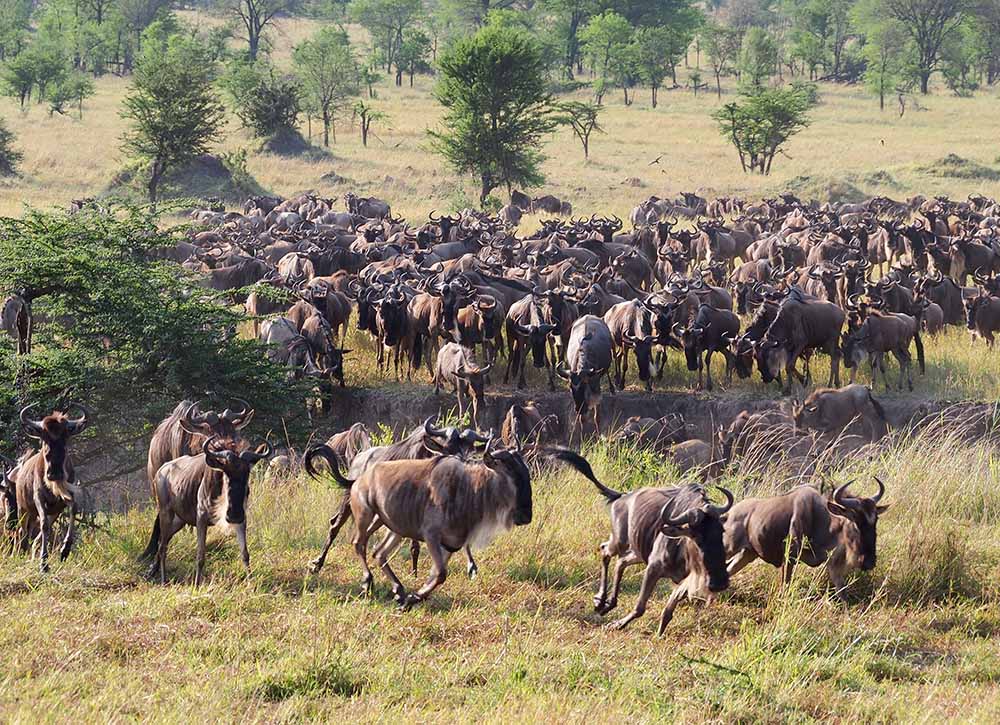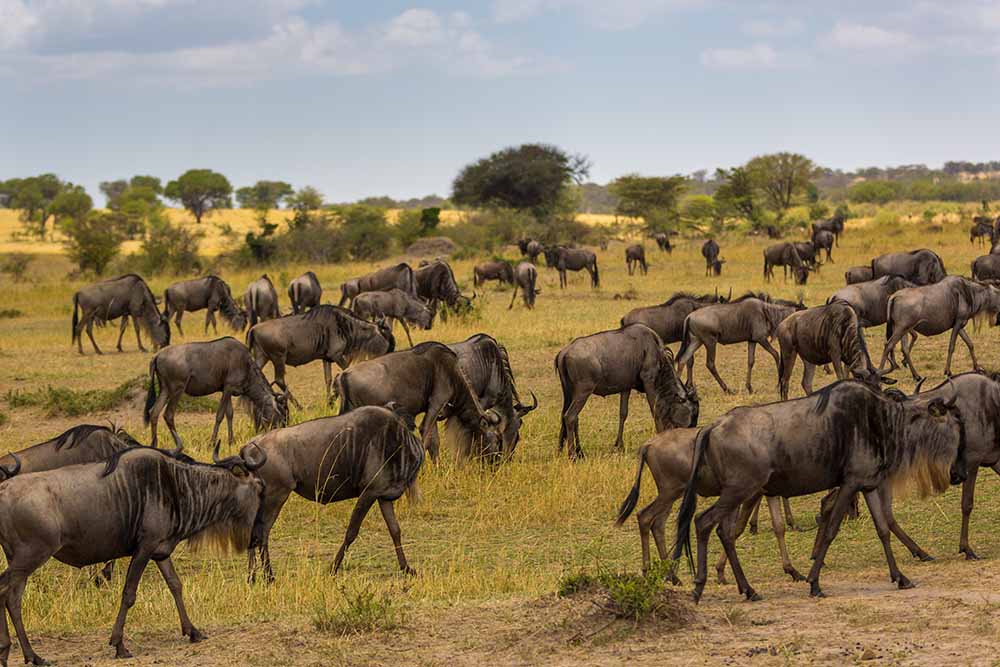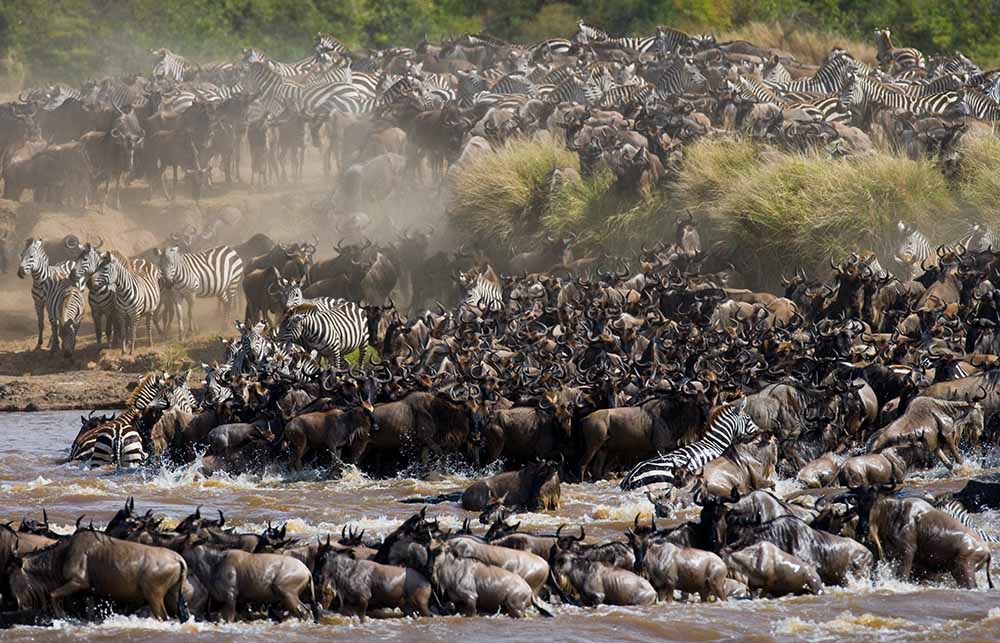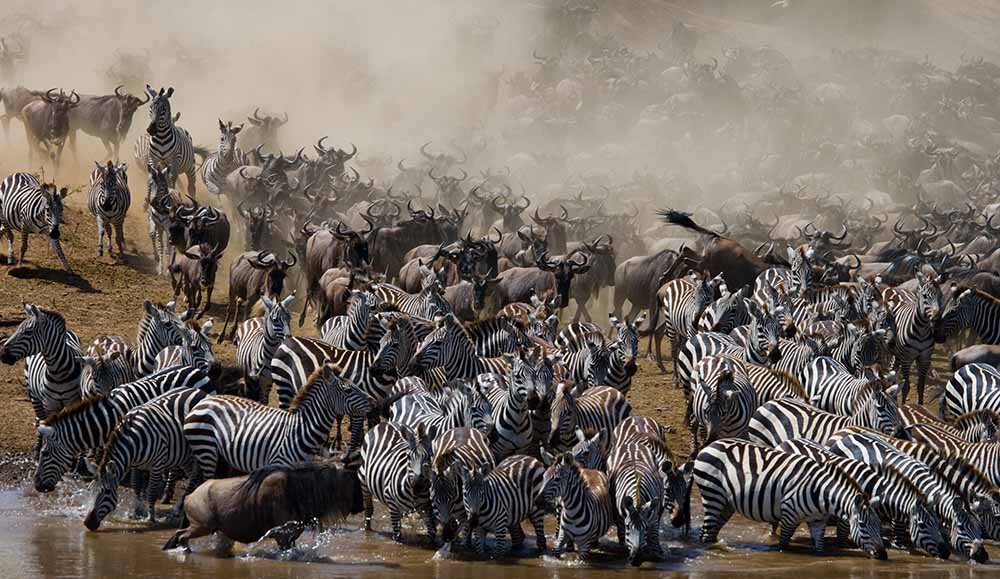Great Wildebeest Migration
Vwasu Expeditions offers an exceptional opportunity to witness the awe-inspiring Great Wildebeest Migration in Serengeti National Park, a true circle of life spectacle that is unparalleled anywhere else in the world.
This remarkable journey begins in the southern Serengeti, where wildebeest calves are born, providing a captivating sight for avid wildlife enthusiasts.
Predators such as lions and hyenas are constantly on the prowl, making it a feast for the eyes.
As the dry season arrives in May, the massive herd embarks on its northward trek towards the Masai Mara in Kenya, devouring the lush green grass along the way.
However, the migration is not without its perils. Crossing rivers entails facing approximately 3,000 crocodiles lying in wait for a potential kill.
The Serengeti is renowned for its vast lion population, the largest in Africa, and witnessing a group of lions collaborating to hunt down a wildebeest is an unforgettable sight.
With the onset of the short rains in late October, the migration makes its way back into the Serengeti.
By December, the herds pass Seronera, a small settlement in the central Serengeti where the official Serengeti Visitors’ Centre is located, as they return to their calving grounds, completing the circle of life.
To experience the Great Migration, booking a safari with Vwasu Expeditions is the way to go. It’s important to note that while we have provided a general overview of the migration, the timing is subject to variations and there are no guarantees.
However, the annual migration of over two million ungulates, including wildebeest, zebras, Thomson’s gazelles, Grant’s gazelles, and elands, through the Serengeti National Park is widely regarded as the greatest wildlife spectacle in Africa.
From December to April, the southeastern Serengeti becomes the main calving grounds, and the region teems with wildebeest and other ungulates.
The short rains in November and December trigger their move to this area, and witnessing the birth of calves against the backdrop of the lush landscape is a highlight.
This period offers excellent accessibility and abundant wildlife, making February the prime time to visit the Ndutu area and southeastern plains.
From May to July, the wildebeest herd, having given birth and feasted on the green grass, embarks on its epic 800-kilometer journey.
This is the time when you may witness the awe-inspiring phenomenon of over a million animals marching in a column that can stretch up to 40 kilometers.
The migration heads towards the Western Corridor, facing the first major obstacle of crossing the Grumeti River, which is fraught with danger from crocodiles.
The herd may congregate on the river’s southern bank before crossing, providing a unique spectacle.
During August and September, the migration continues northward, crossing the Mara River, a famed crossing point known for iconic Great Migration photographs.
While this period is considered a less ideal time to visit the Serengeti, as the herd moves into the Masai Mara in Kenya, a significant portion of the herd remains in the Mara Serengeti area.
This time offers opportunities to witness smaller herds frequently crossing the Mara River, creating remarkable scenes.
It is an excellent time to stay at one of the Serengeti Mara camps.
October and November mark the return journey of the migration. The herd crosses the Mara River once more before traversing the northern plains and the Lobo area.
This lesser-visited section of Serengeti National Park provides a quieter setting to observe the migration.
In late November, the wildebeest return to the short-grass plains and calving grounds around Ndutu, initiating the cycle of the Great Migration once again.
Embarking on a journey with Vwasu Expeditions ensures an unparalleled experience, accompanied by knowledgeable guides who will enhance your understanding of this extraordinary natural phenomenon.
Prepare to be captivated by the sheer magnificence and power of the Great Wildebeest Migration, where the circle of life unfolds before your eyes, leaving an indelible mark on your soul.



